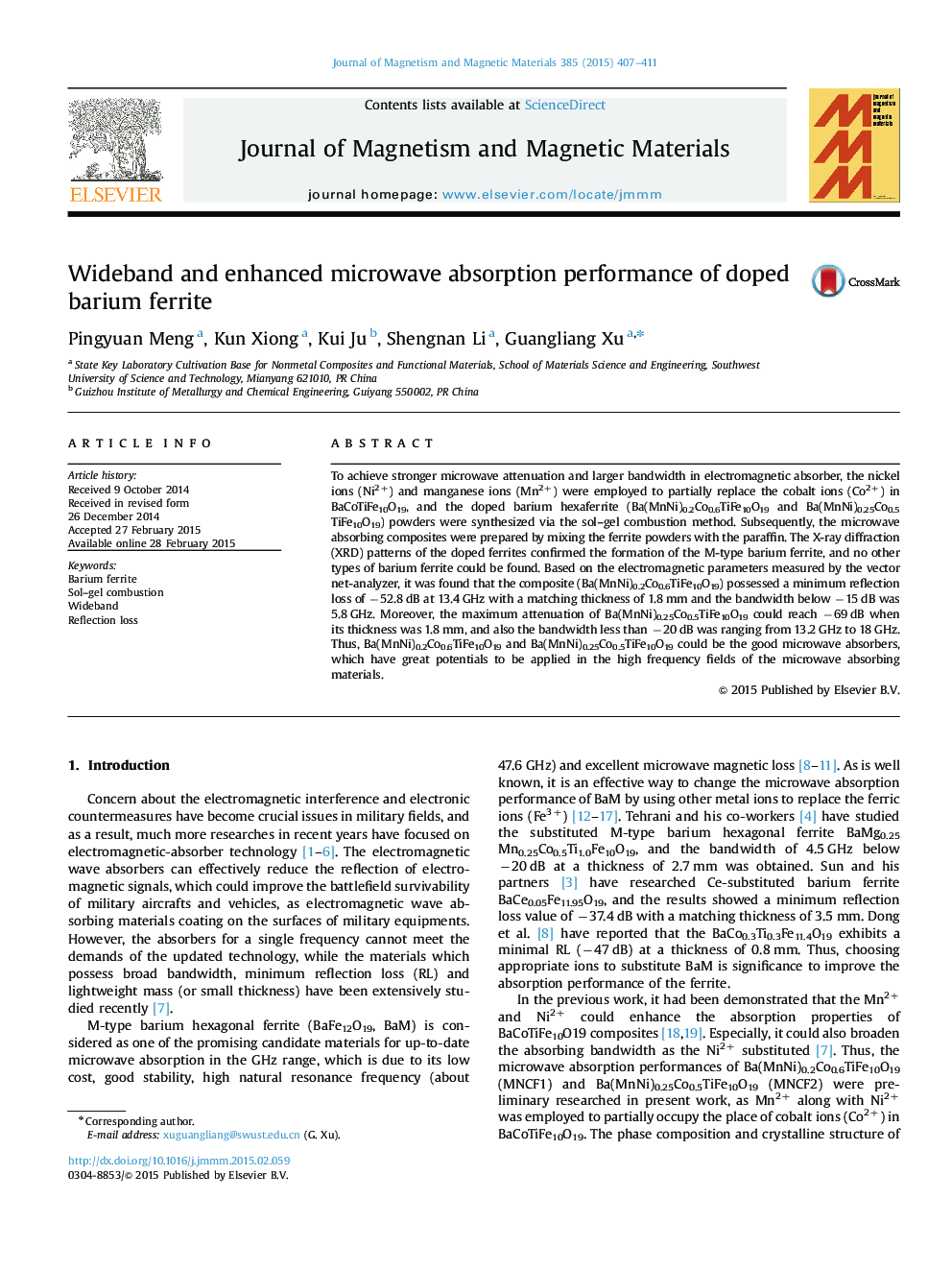| Article ID | Journal | Published Year | Pages | File Type |
|---|---|---|---|---|
| 1799171 | Journal of Magnetism and Magnetic Materials | 2015 | 5 Pages |
•The Co was first time substituted by Mn–Ni in ferrites.•The substituted ferrites had good microwave absorption.•The doped ferrites had broad bandwidth and low reflection loss.
To achieve stronger microwave attenuation and larger bandwidth in electromagnetic absorber, the nickel ions (Ni2+) and manganese ions (Mn2+) were employed to partially replace the cobalt ions (Co2+) in BaCoTiFe10O19, and the doped barium hexaferrite (Ba(MnNi)0.2Co0.6TiFe10O19 and Ba(MnNi)0.25Co0.5TiFe10O19) powders were synthesized via the sol–gel combustion method. Subsequently, the microwave absorbing composites were prepared by mixing the ferrite powders with the paraffin. The X-ray diffraction (XRD) patterns of the doped ferrites confirmed the formation of the M-type barium ferrite, and no other types of barium ferrite could be found. Based on the electromagnetic parameters measured by the vector net-analyzer, it was found that the composite (Ba(MnNi)0.2Co0.6TiFe10O19) possessed a minimum reflection loss of −52.8 dB at 13.4 GHz with a matching thickness of 1.8 mm and the bandwidth below −15 dB was 5.8 GHz. Moreover, the maximum attenuation of Ba(MnNi)0.25Co0.5TiFe10O19 could reach −69 dB when its thickness was 1.8 mm, and also the bandwidth less than −20 dB was ranging from 13.2 GHz to 18 GHz. Thus, Ba(MnNi)0.2Co0.6TiFe10O19 and Ba(MnNi)0.25Co0.5TiFe10O19 could be the good microwave absorbers, which have great potentials to be applied in the high frequency fields of the microwave absorbing materials.
